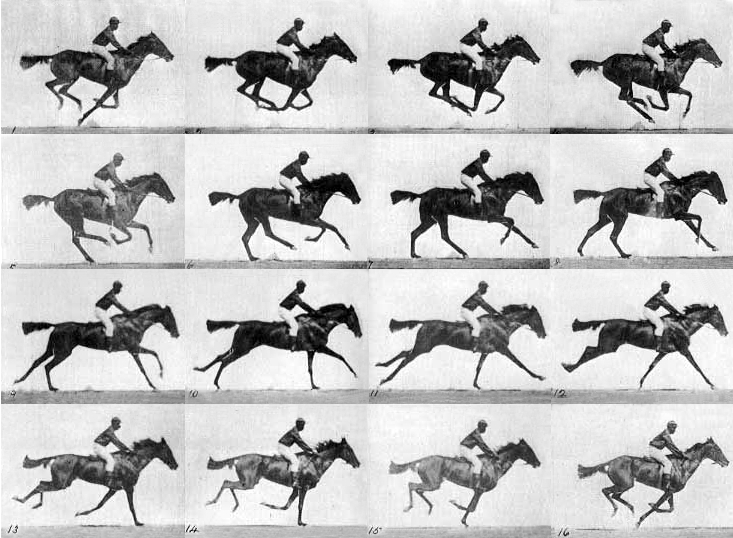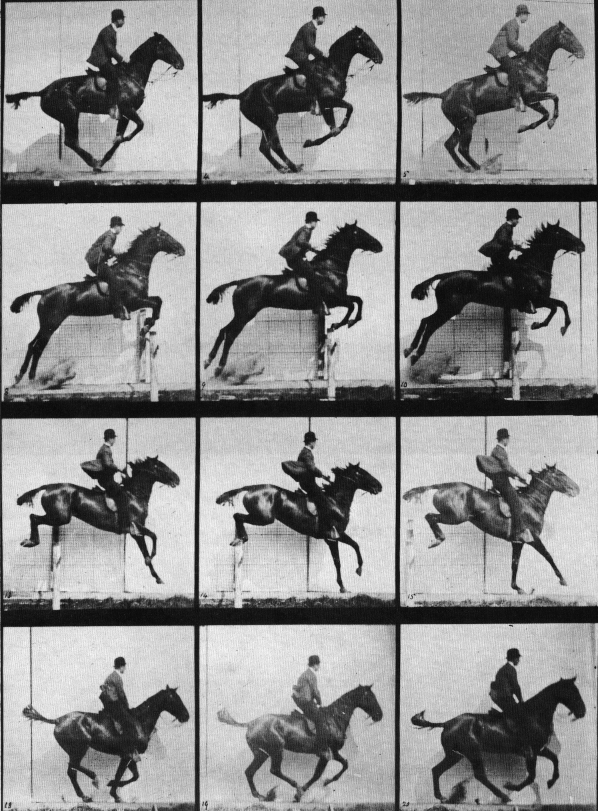
Back in 1872, there was considerable debate over whether all four of a horse’s hooves left the ground at the same time when galloping. Conventional wisdom at the time either thought this was impossible — that the horse always was anchored by at least one hoof — or a horse took on a “rocking horse” stance, with its fore and hind legs outstretched, which was how popular artists at the time depicted it.
Enter former Governor of California Leland Stanford, a businessman and race-horse owner, and photographer Eadweard Muybridge. The story was that Stanford bet Dr. John D. Isaac $25,000 that at least one foot of a horse stays in contact with the ground at all times. He hired renowned photographer Eadweard Muybridge to take the photo that would prove him right and lost the bet. The horse that made the first image was Stanford’s prize trotter, Occident.
That, however, is just a story. In truth, Stanford’s real interest was in studying horses closely enough to understand their behavior in motion. By doing this, he hoped to improve his breeding and training methods for horse racing.
To prove Stanford’s claim, Muybridge invented the technology that allowed photography to capture the

sequence of motion (through increased shutter speeds). While Muybridge achieved a single image in silhouette relatively quickly, it took five years for him to develop the technology that allowed him to produce the sequence of motion photographs that he is know for.
Muybridge and a team of engineers built a track and a bank of cameras at Stanford’s stock farm in Palo Alto, Calif. As you can see from the diagram, the horse “tripped” a series of wires that caused each camera to take a photograph. The set up used 12 stereoscopc cameras placed 21 inches apart to cover the 20 feet taken by one horse stride. The shutter speed was 1/1000 of a second! Not only did this achieve frames showing individual motion, but it also set the stage for motion pictures.

One thing was very clear from Muybridge’s pictures: No painter had ever gotten the position of a horse’s legs correctly. In fact, many contemporary painters disputed his findings when they were first announced as it meant that their paintings were all incorrect. He also debunked the myth that a horse uses its legs the same way in an amble, canter and gallop.
The images here show several sequences that Muybridge did as part of his Horse in Motion series. The really cool thing is that if you animate the individual pictures, they do look like a movie. WordPress doesn’t support animated Gif files, but here are links to the Galloping Horse and the Jumping Horse.


Back on the 1980s-90s their was a TV movie made about Muybridge’s story. Does anyone remember the name?
yes it was called the zooproxographer
Close but no cigar…Eadweard Muybridge named it the zoopraxiscope